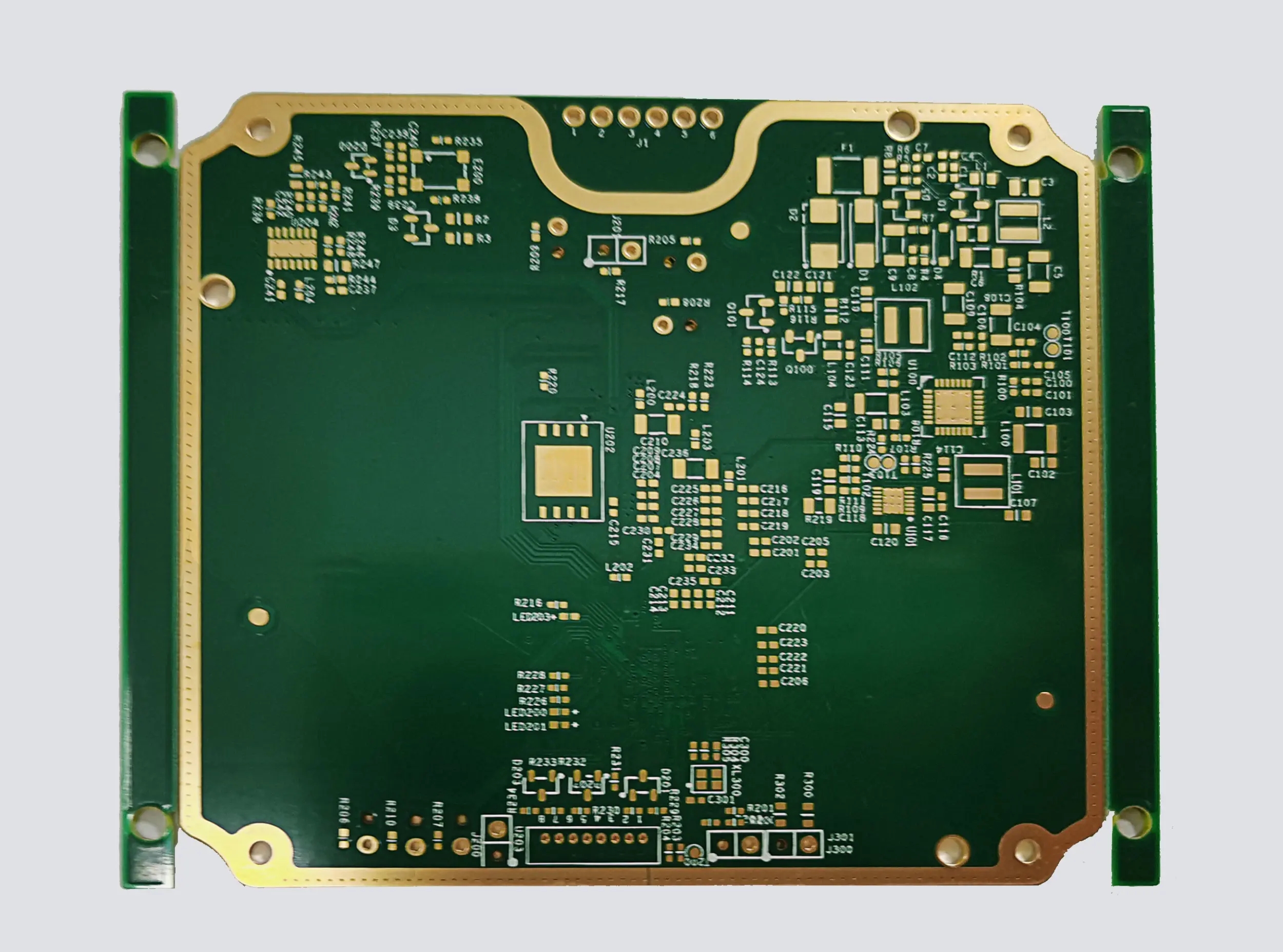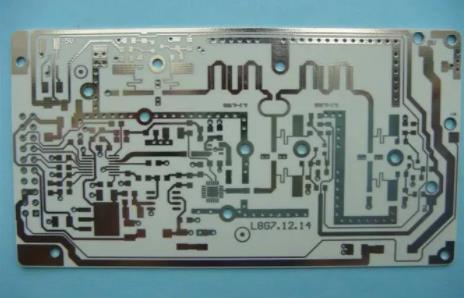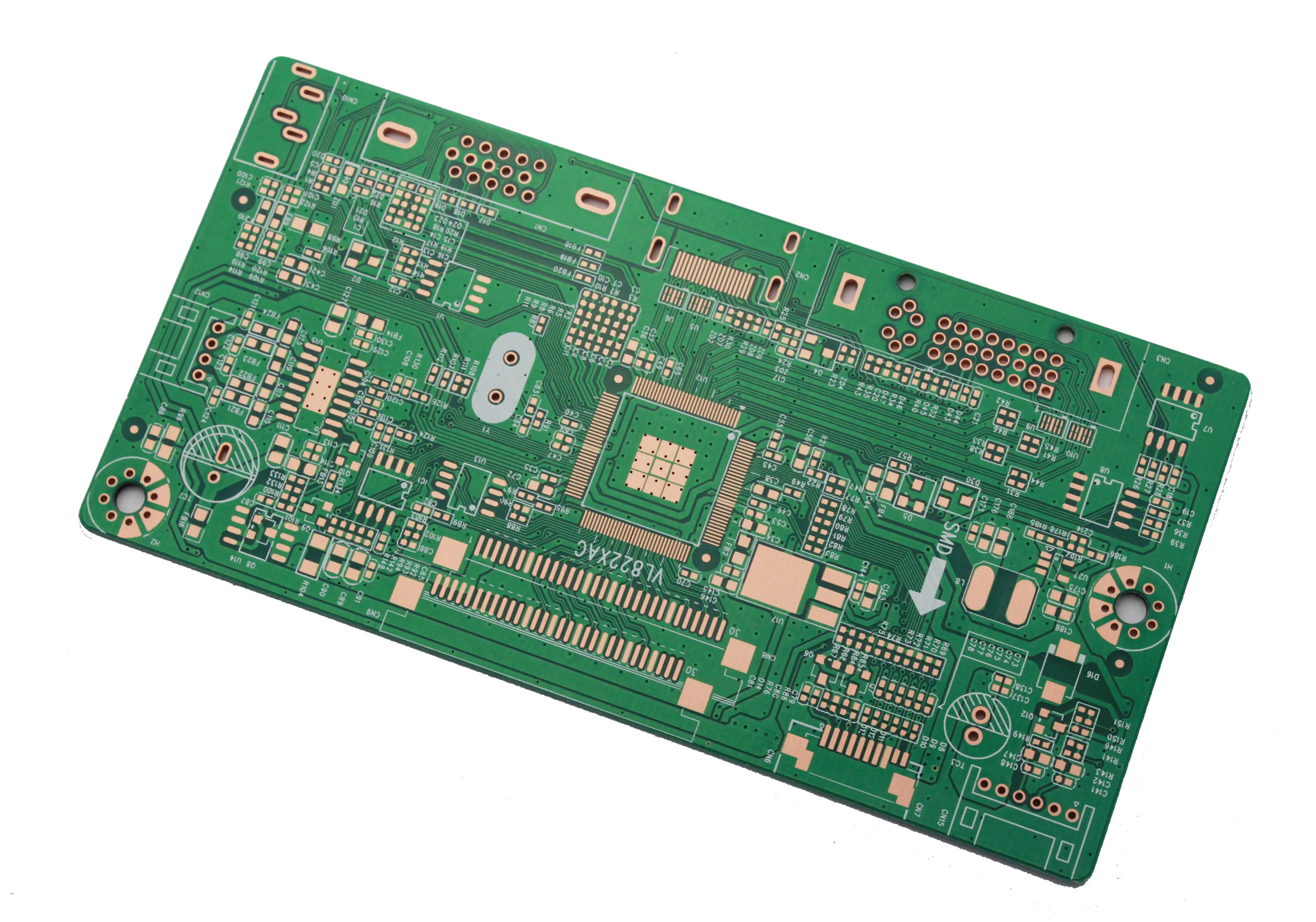
Circuit board manufacturer explains impedance matching principle
Circuit board manufacturers, circuit board designers and PCBA manufacturers explain the impedance matching principle to you
Impedance matching is a common working state in radio technology, which reflects the power transmission relationship between input circuit and output circuit. When the circuit achieves impedance matching, the maximum power transmission will be obtained. On the contrary, when the circuit impedance is mismatched, not only the maximum power transmission cannot be obtained, but also the circuit may be damaged. Impedance matching is common between all levels of amplification circuits, amplifiers and loads, measuring instruments and circuits under test, antennas and receivers or transmitters and antennas, etc. For example, the impedance between the output circuit of the loudspeaker and the loudspeaker must be matched. If it is not matched, the output power of the loudspeaker cannot be completely transmitted to the loudspeaker. If the impedance of the loudspeaker is far less than the output impedance of the loudspeaker, the loudspeaker will be in an overload state, and its final power amplifier tube will be easily damaged. On the contrary, if the impedance of the loudspeaker is too much higher than the output impedance of the loudspeaker, the output voltage will rise, which is also not conducive to the operation of the loudspeaker and the loudspeaker, and the sound will also be distorted. Therefore, the closer the amplifier circuit output impedance is to the speaker impedance, the better. For another example, the output impedance of the radio transmitter should be consistent with the impedance of the feeder and the impedance of the feeder and antenna. If the impedance values are inconsistent, the high-frequency energy output by the transmitter will not be transmitted completely by the antenna. The energy not emitted from this part will be reflected back to generate standing wave, which may cause damage to the insulation layer of the feeder and the final power amplifier tube of the transmitter in serious cases. In order to effectively transmit signal and energy, the circuit must work in the impedance matching state, that is, the internal resistance of the signal source or power source is equal to the input impedance of the circuit, and the output impedance of the circuit is equal to the impedance of the load. The general input and output circuits often contain resistance, capacitance and inductance components. The circuit composed of them is called reactance circuit, and the circuit containing only resistance is called pure resistance circuit. The impedance matching problems of pure resistance circuit and reactance circuit are briefly analyzed below.

1. Pure resistance circuit
In the physics and electricity of middle school, I once told a question: When a consumer with resistance R is connected to a battery pack with electromotive force E and internal resistance r, under what conditions does the power supply output the maximum power? When the external resistance is equal to the internal resistance, the power output of the external circuit of the power supply is the largest, which is the power matching of the pure resistance circuit. If the circuit is replaced by an AC circuit, it must also meet the condition of R=r to match the circuit.
Circuit board manufacturers, circuit board designers and PCBA manufacturers explain the impedance matching principle to you
2. Reactance circuit
Reactance circuit is more complex than pure resistance circuit. In addition to resistance, there are capacitors and inductors in the circuit. And operates in low-frequency or high-frequency AC circuits. In an AC circuit, the blocking effect of resistance, capacitance and inductance on AC current is called impedance, which is represented by the letter Z. Among them, the blocking effect of capacitance and inductance on alternating current is called capacitive reactance and inductive reactance respectively. The values of capacitive reactance and inductive reactance are not only related to the size of capacitance and inductance, but also related to the frequency of the AC current. It is worth noting that in the reactance circuit, the values of resistance R, inductive reactance and capacitive reactance cannot be added by simple arithmetic, but are usually calculated by impedance triangle method. Therefore, the matching of reactance circuit is more complicated than that of pure resistance circuit. In addition to the requirements of equal resistance components in input and output circuits, the reactance components should be equal in size and opposite in sign (conjugate matching); Or the resistance component and reactance component are equal respectively (no reflection matching). The reactance X here refers to the difference between inductive reactance XL and capacitive reactance XC (for series circuit only, the calculation is more complicated if it is parallel circuit). Meeting the above conditions is called impedance matching, and the load can get the maximum power. The key of impedance matching is that the output impedance of the front stage is equal to the input impedance of the rear stage. The input impedance and output impedance widely exist in various electronic circuits, various measuring instruments and various electronic components. What are input impedance and output impedance? Input impedance refers to the impedance of the circuit to the signal source. For example, the higher the input impedance (called voltage sensitivity) of the voltage range in the multimeter, the smaller the shunt to the circuit under test, and the smaller the measurement error. The lower the input impedance of the current block, the smaller the voltage division of the circuit under test, and therefore the smaller the measurement error. For power amplifier, when the output impedance of the signal source is equal to the input impedance of the amplifier circuit, it is called impedance matching, and then the amplifier circuit can obtain the maximum power at the output end. Output impedance refers to the impedance of the circuit to the load. For example, voltage source requires low output impedance, while current source requires high output impedance. For an amplifier circuit, the value of the output impedance indicates its ability to bear the load. Usually, the output impedance is small, and the ability to bear the load is strong. If the output impedance cannot match the load, a transformer or network circuit can be added to match. For example, an output transformer is usually connected between a transistor amplifier and a loudspeaker. The output impedance of the amplifier matches the primary impedance of the transformer, and the secondary impedance of the transformer matches the impedance of the loudspeaker. The transformer transforms the impedance ratio through the turns ratio of the primary winding. In the actual electronic circuit, it is often encountered that the impedance of the signal source and the amplifier circuit or the amplifier circuit and the load is not equal, so they cannot be directly connected. The solution is to add a matching circuit or matching network between them. Finally, it should be noted that impedance matching is only applicable to electronic circuits. Because the signal power transmitted in the electronic circuit is weak, matching is needed to improve the output power. In the electrical circuit, matching is generally not considered, otherwise it will lead to excessive output current and damage the electrical appliances.
Electronic tube
A basic electron tube generally has three electrodes: a cathode (K) for emitting electrons, an anode (A) for absorbing electrons emitted by the cathode, and a grid (G) for controlling the flow of electrons to the anode The basic conditions for the cathode to emit electrons are: the cathode itself must have considerable heat, and there are two types of cathodes. One is the direct heating type, which emits electrons by heating the cathode directly through the current; The other is called side heated cathode. Its structure is generally a hollow metal tube, which is equipped with a spiral filament. With the filament voltage, the filament heats up so that the cathode heats up and emits electrons. Today, most of the tubes are used in daily life The electrons emitted from the cathode pass through the gap between the grid wires and reach the anode. Since the grid is much closer to the cathode than the anode, changing the grid potential has a much greater impact on the anode current than changing the anode voltage. This is the amplification effect of the triode. In other words, the control effect of the grid voltage on the anode current. We use a parameter called transconductance (S) to express it There is another parameter μ To describe the amplification factor of the electron tube, its significance is to show how many times more powerful the grid voltage is than the anode voltage in controlling the anode current
In order to improve the amplification coefficient of the electron tube, another grid is added between the anode and the control grid of the triode, which is called the curtain grid. The quadrupole is formed. Because the curtain grid has a much higher positive voltage than the cathode, it is also a powerful accelerating electrode, which enables electrons to reach the anode quickly at a higher speed, so that the control role of the control grid becomes more significant. Therefore, it has a greater amplification coefficient than the triode However, due to the acceleration effect of the curtain grid electrode on the electrons, high-speed electrons hit the anode. These high-speed electrons have great kinetic energy, which will knock out the so-called secondary electrons from the anode. Some of these secondary electrons will be absorbed by the curtain grid to form a curtain grid current, which will lead to the decrease of the screen grid voltage and thus lead to the decrease of the anode current. Therefore, the amplification factor of the quadrupole is limited
In order to solve the above contradiction, a pair of collector and emitter connected with the cathode are added on both sides outside the curtain grid of the quadrupole. Since the potential of the collector and emitter is the same as that of the cathode, it repels electrons, so that after passing through the curtain grid, electrons move forward in a certain direction under the action of the collector and form a flat beam. The electron density of the flat electron beam is very high, thus forming a low-voltage area, The secondary electrons knocked out of the anode are pushed back to the anode due to the repulsion of this low voltage area, thus greatly reducing the screen grid current and strengthening the amplification ability of the electron tube This kind of electron tube is called the beam tetrode. The beam tetrode not only has a higher amplification factor than the triode, but also has a larger anode area, allowing a larger current to pass through. Therefore, it is commonly used as a power amplifier in current power amplifiers
Feedback circuit in electronic circuit
The feedback circuit has been widely used in various electronic circuits. Feedback is the feedback process of the amplifier, in which part or all of the amplifier's output signals (voltage or current) are fed back to the input end of the amplifier to compare (add or subtract) with the input signals, and the effective input signals obtained from the comparison are used to control the output The feedback signal fed back to the input end of the amplifier strengthens the original input signal and increases the input signal is called positive feedback. On the contrary, it is negative. It can be divided into current feedback circuit and voltage feedback circuit according to its circuit structure Positive feedback circuits are mostly used in electronic oscillation circuits, while negative feedback circuits are mostly used in various high and low frequency amplification circuits. Since they are widely used, we will discuss negative feedback circuits here. Negative feedback has four effects on amplifier performance:
1. Negative feedback can improve the stability of amplifier gain
2. Negative feedback can broaden the pass band of the amplifier
3. Negative feedback can reduce the distortion of amplifier
4. Negative feedback can improve the signal-to-noise ratio of the amplifier
5. Negative feedback affects the output and input resistance of the amplifier
According to the formula:
It can be seen from the above formula that when R=r, the value of (R-r) in the denominator of the formula is at least 0, and the power obtained by the load is the maximum. Therefore, when the load resistance is equal to the internal resistance of the power supply, the load will obtain the maximum power. This is the basic principle of impedance matching in electronic circuits.
Characteristics of series and parallel resonant circuits
1、 Series resonant circuit: when external frequency is added to a series resonant circuit, it has the following characteristics:
1. When the external frequency is equal to its resonant frequency, its circuit impedance is purely resistive and has the minimum value, which is called a wave trap in practical applications
2. When the external frequency is higher than its resonant frequency, the circuit impedance is inductive, equivalent to an inductive coil
3. When the external frequency is lower than its resonant frequency, the circuit is capacitive, equivalent to a capacitor
2、 And; Joint resonant circuit: when external frequency is added to a parallel resonant circuit, it has the following characteristics:
1. When the external frequency is equal to its resonant frequency, its circuit impedance is purely resistive and has a maximum value, which is called frequency selection circuit in practical applications
2. When the external frequency is higher than its resonant frequency, the circuit impedance is capacitive, equivalent to a capacitor
3. When the external frequency is lower than its resonant frequency, the circuit is inductive, equivalent to an inductive coil
Therefore, when the series or parallel resonant circuit is not regulated at the signal frequency point, the signal will produce phase shift through it (i.e. phase distortion) PCB manufacturers, PCB designers and PCBA manufacturers explain the impedance matching principle to you.







